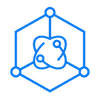Make sense of Volatility, Uncertainty, Complexity, and Ambiguity in fast-changing environments.
Quick Introduction
In today’s fast-changing world, many people and organizations feel overwhelmed. As a result, decision-making becomes harder, and old strategies no longer work. To face these challenges, we need a better way to understand our environment.
The VUCA framework is used to describe and identify a complicated environment.
Originally developed by the U.S. Army War College in the 1990s, it helped military leaders understand the unpredictable post-Cold War world. Today, businesses, leaders, and teams utilize it to make sense of change and plan smarter actions.
Breaking Down VUCA
VUCA stands for Volatility, Uncertainty, Complexity, and Ambiguity. Each word shows a different kind of challenge we might face.
Volatility
Change is fast and usually unexpected. It comes without warning. We need flexible plans and quick responses.
Example: Prices of raw materials suddenly go up or down.
Uncertainty
There is a lack of clear information, therefore, it's hard to predict what will happen next. We need to improve how you collect data and learn from it.
Example: A new competitor enters the market, and you're not sure how customers will react.
Complexity
Many parts are connected and affect each other, even small changes can have big effects. You need systems thinking and strong coordination.
Example: A global supply chain where a small delay in one country causes big problems elsewhere.
Ambiguity
There is no clear meaning or rule. Things can be understood in different ways. Let's ask questions, test ideas, and stay open-minded.
Example: You launched a new product in a new market, but customer feedback is mixed and hard to interpret.


